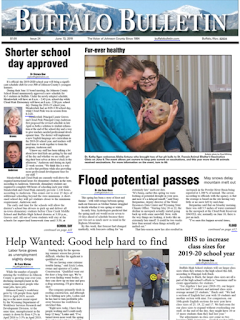 |
Unionized ERS and NIFA employees turned backs to the stage
during Perdue's announcement. (McClatchy photo by Brian Lowry)
|
"Nearly 550 positions at the Economic Research Service, a statistical agency, and the National Institute of Food and Agriculture, which funds cutting-edge agricultural science, are expected to be moved before year’s end," Ben Guarino reports for The Washington Post. "USDA estimated the savings at $300 million over 15 years from employment and rent" and said the move would put the agencies closer to agricultural stakeholders.
Some ERS and NIFA employees claim the move is an effort to force them to quit, rather than relocate their families, which will allow the USDA to replace them with employees more sympathetic to the Republican Party. The ERS researches the economic effects of climate change, trade policy, food stamps and more. "NIFA unionized earlier this week, and ERS unionized in May in the face of the decision. Union officials have promised to fight the move," Guarino reports.
When Agriculture Secretary Sonny Perdue told employees about the decision to relocate to Kansas City, the unionized employees turned their backs on the stage, Jerry Hagstrom reports for DTN/The Progressive Farmer.
The employees aren't the only ones concerned. Losing experienced employees with specialized skills will set the ERS back "five to 10 years," Gale Buchanan, the USDA's chief scientist under President George W. Bush, and Catherine Woteki, the chief scientist in the Obama administration, told Congress in a letter last year. And Jack Payne, the Unversity of Florida's senior vice president for agriculture, told Guarino that the move would cut NIFA off from collaborating with major federal funding agencies in Washington, Guarino reports.
The relocation effort will suffer further because there isn't a chief scientist at the USDA to oversee ERS, NIFA, and other agency research offices, Guarino reports.












